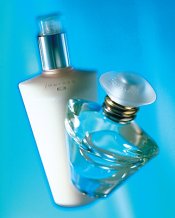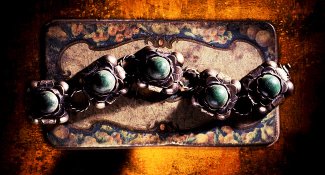Sort-of, Dan - but per the post, these were all shot 35mm for grain.
The lights were aimed on each level/layer, and I'd shoot the top layer, turn off those lights, turn on the bottom layer lights, and refocus on the bottom layer... this made the product on the top layer a soft silhouette that blocked some of the bottom layer. Then I'd light just the BG (the floor actually) and both products would be soft silhouettes.
I did some stuff like this 4x5, but mainly to really rack the DOF all to hell with shifts. Shot some 6x7MF as well, but the 35mm grain with EPJ was just (to me) luscious. That was my favorite film for some time for editorial stuff, and duping it onto sheet film really popped the grain and made it easy to show.
Usually by the time the shot was done, I had so many light stands, booms, and reflectors it was like a cage around the set... the dual products had to be only inches apart to keep the size relationships, lots of tiny black paper snoots, blackwrap, and snipped up metal flashing for reflectors.
The shot of the model, I had tungsten fresnels lighting the back wall, and a strobe on the model, with the modeling light turned off. I'd shoot at, say, a half second - after the flash popped I'd move the camera or twist the focus ring to soften the BG. This was a little difficult, usually I had an assistant on the model light switch. I also did this with two banks of tungsten lights on switches and would call "front - back!!" with longer exposures, racking focus as needed. I would also do the constant BG light with the foreground strobes, and just stick diffusion in front of the lens after the pop - usually just a 4x5 film sleeve rubbed on my forehead... long before the massive choice of diffusion the digital cinema era has given us. Diffusion tricks at least allowed me to stop down a bit more - some of this was really wide-open to get a good focus difference.
Those were some long nights, doing this commercially and waiting for snip tests from the lab in the morning!!! I'd push EPJ 2, 3 and 4 stops. Gorgeous stuff.


















